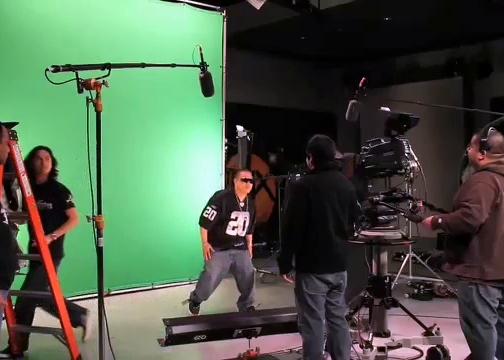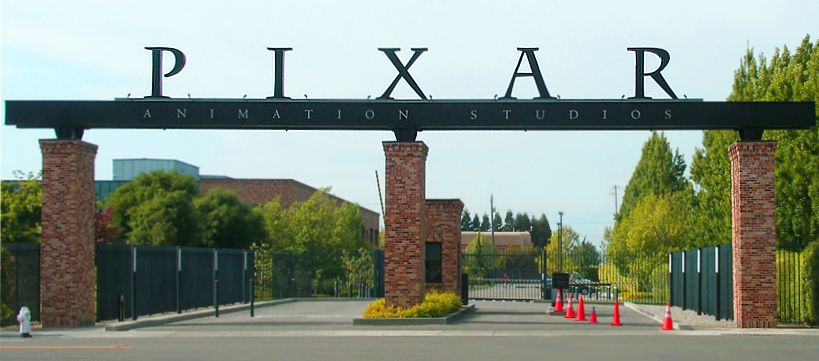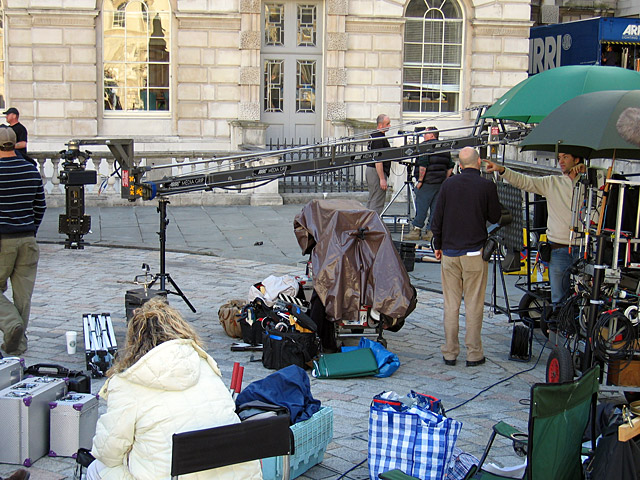It’s an argument as old as the hills. Did the advancement of ubiquitous CGI kill the art of moviemaking, and has it rendered many of the old school methods of visual effect creation obsolete? Moreover, has CGI sold us down the river as audiences, and taught us to accept digital fakery?
It’s fervent and important for both cinema lovers and those trying to find the right balance at producing school since it’s widely accepted that terrible effects—be it CGI or traditional—can severely hamper an otherwise great movie.
Today we’ll be looking at both sides of the coin with the unpacking of:
CGI vs. Traditonal SFX: The Common Arguments

“Traditional Effects Look Better than CGI!”
There are many examples that people commonly point to and say, “Man, this scene really benefits from the realism; I’m glad they didn’t use CGI to do Benjamin Button’s makeup, and that they made an actual Iron Man suit for Robert Downey Jr. to wear during scenes when he’s not flying around.”
Nope. That’s all CGI, too.
The only suit Robert ever wears on the set of an Iron Man flick is a green screen suit, and 95% of the aging effects in The Curious Case of Benjamin Button are achieved with CGI, not makeup artistry. Sandra Bullock wasn’t suspended by expert rigging in amidst of generated scenery in Gravity—for much of the film, Bullock herself was composited into the scene.
In short, we tend to credit a lot of CGI successes to traditional SFX, and give a lot of bad rap to CGI when it goes wrong.
Which Really Ages Worst?
There’s a common charge against CGI that it ages a lot quicker than traditional effects. We’ll probably need a few more decades of cinema before we can say either way whether or not this is the case. At the moment, however, it depends on which examples you cherry pick—The Mummy Returns is a classic example of terrible early CGI, but Gladiator and Terminator 2 still hold their own all these years later.
Similarly, the traditional animatronics behind the original SFX may have aged beautifully, but nobody can claim the Ray Harryhausen-style effects preceding it are convincing to anyone (despite how innovative they were at the time).
CGI Has Created a Whole Industry…
Speaking of movies that have aged well, Toy Story would never have existed without advancements in computer animation, and arguably nor would the slew of evermore-impressive animated features which have come since.

Of course, the argument from the other side is that the prevalence of CGI has created a massive over-saturation of family animations and bombastic action flicks; but a counter to this could be that the industry needs these revenue-pulling staples in order to fund traditional (and more subtle) movies.
This leads us neatly on to…
Job Creation and Destruction
If a thousand-strong crowd can be shopped into a stadium, what’s the point of hiring extras? If Benjamin Button’s face can be manipulated with digital effects, why bother recruiting a makeup expert?
The pervasiveness of automata replacing human labor is something that is concerning to just about every industry. In Hollywood, CGI partly replaces many roles such as set creation, modeling, makeup artistry, stunt work, armory and pyrotechnics. All very worrying for those struggling to find work in an already cutthroat industry.

In the latter cases, however, one positive aspect of CGI is that it can serve to reduce danger on set. It has also created brand new fields of work that never before existed—data wranglers and software developers, for instance. Though it’s unlikely that the amount of work created by CGI exceeds the number of jobs it makes redundant.
CGI is Hard to Act Opposite
Sadly for the CGI supporters, this one is hard to refute given that countless actors and actresses have spoken up regarding the challenges of acting in heavily-computer generated environments (and especially when acting opposite characters who literally aren’t there during the shoot).
Worse is that to the viewer, the mixing of live human actors and CGI creations usually looks a little disjointed in the final cut, ruining the suspension of disbelief that enhanced effects should bolster, not detract from.
If there’s any consolation here, it’s that this merging is getting more and more seamless as time goes on, and acting opposite CGI is now a standard, so whether you are in acting school, or a seasoned performer, this is something you should be prepared for.
Over to You…
As we can see, there’s no straightforward answer as to whether or not CGI is, on balance, a force for good in the field of moviemaking. There are a lot of good arguments on both sides.
Where do you stand on CGI vs. traditional SFX? Any strong opinions on either, or arguments we may have missed? Let your voice be heard in the comments below!
